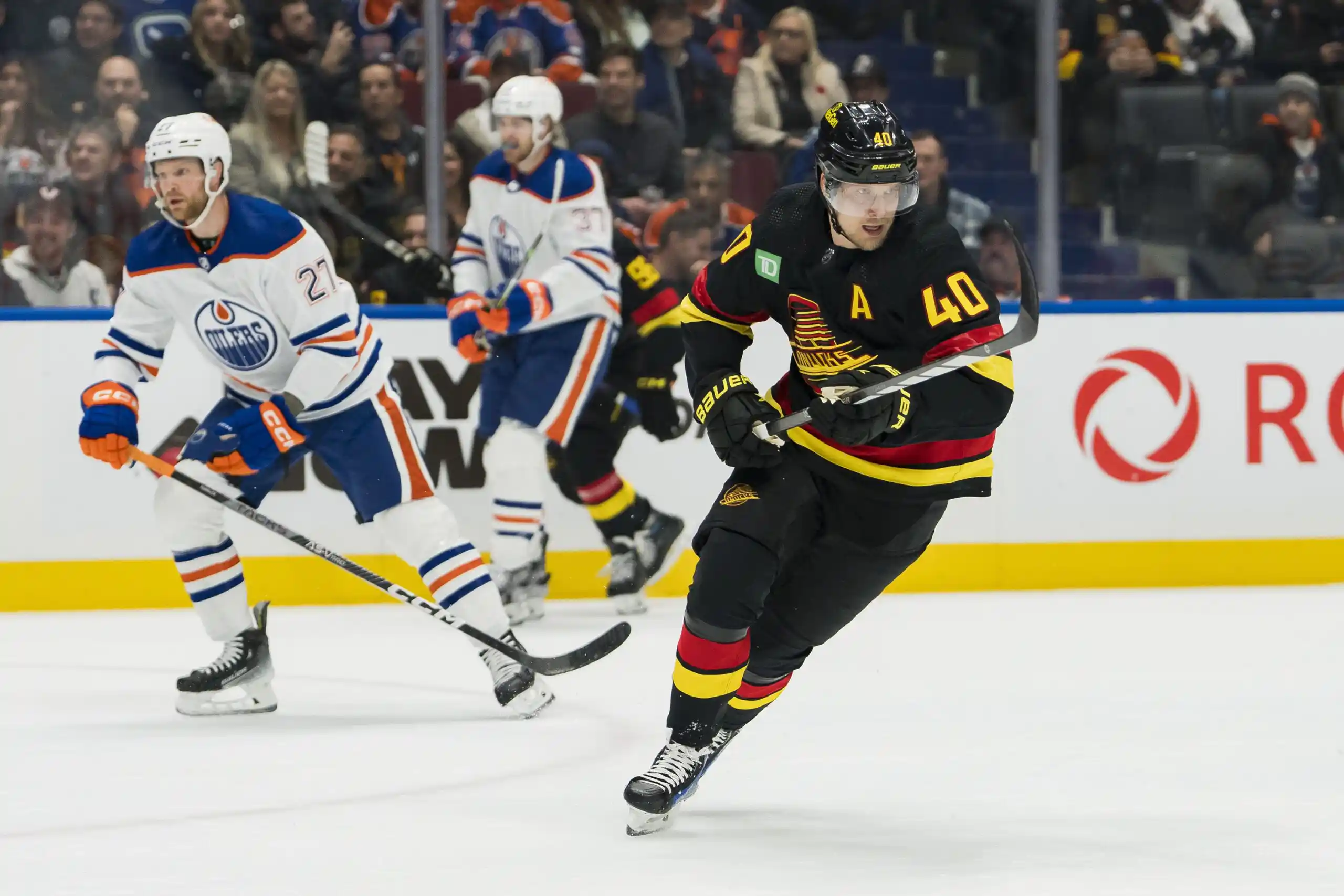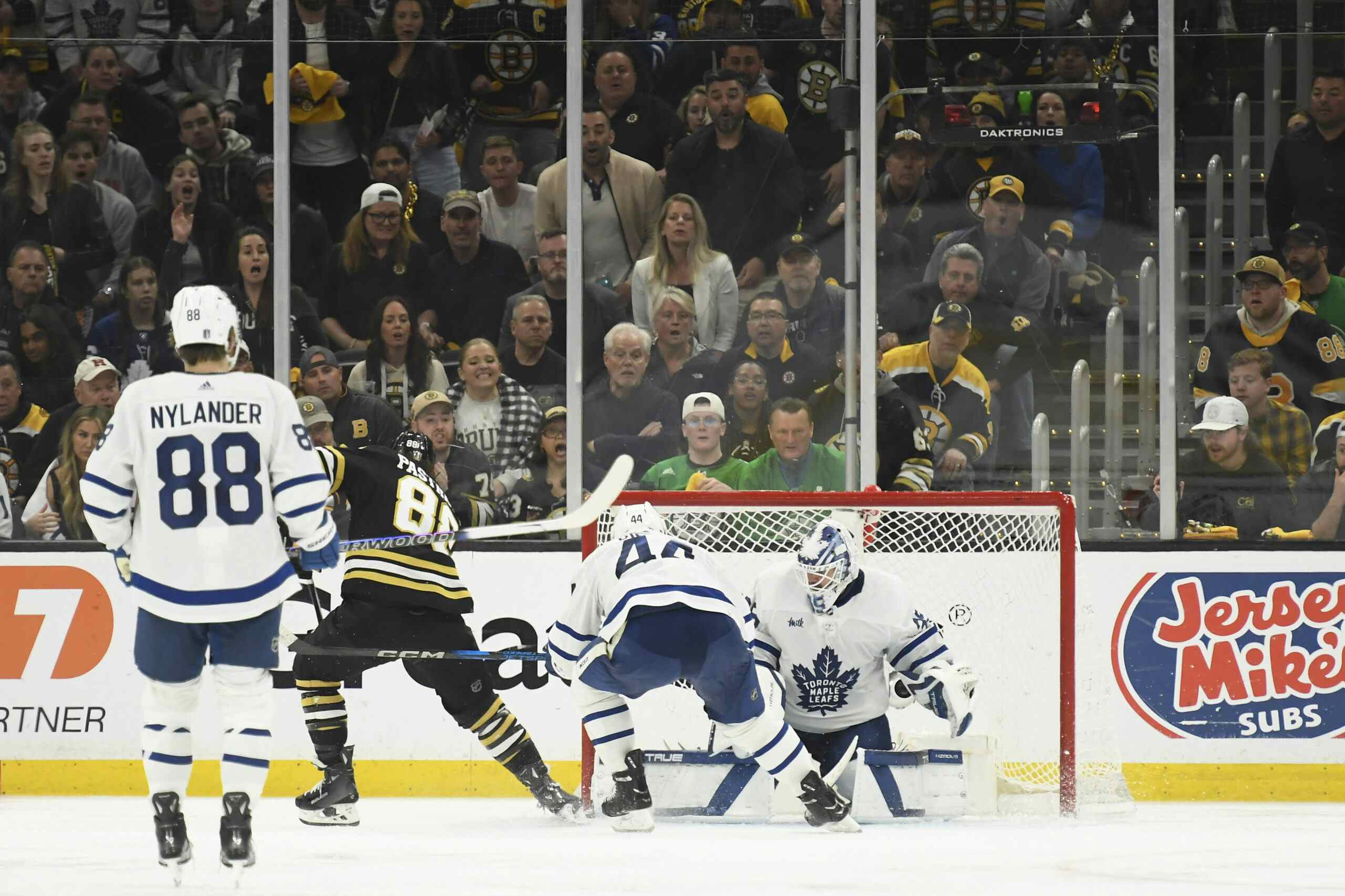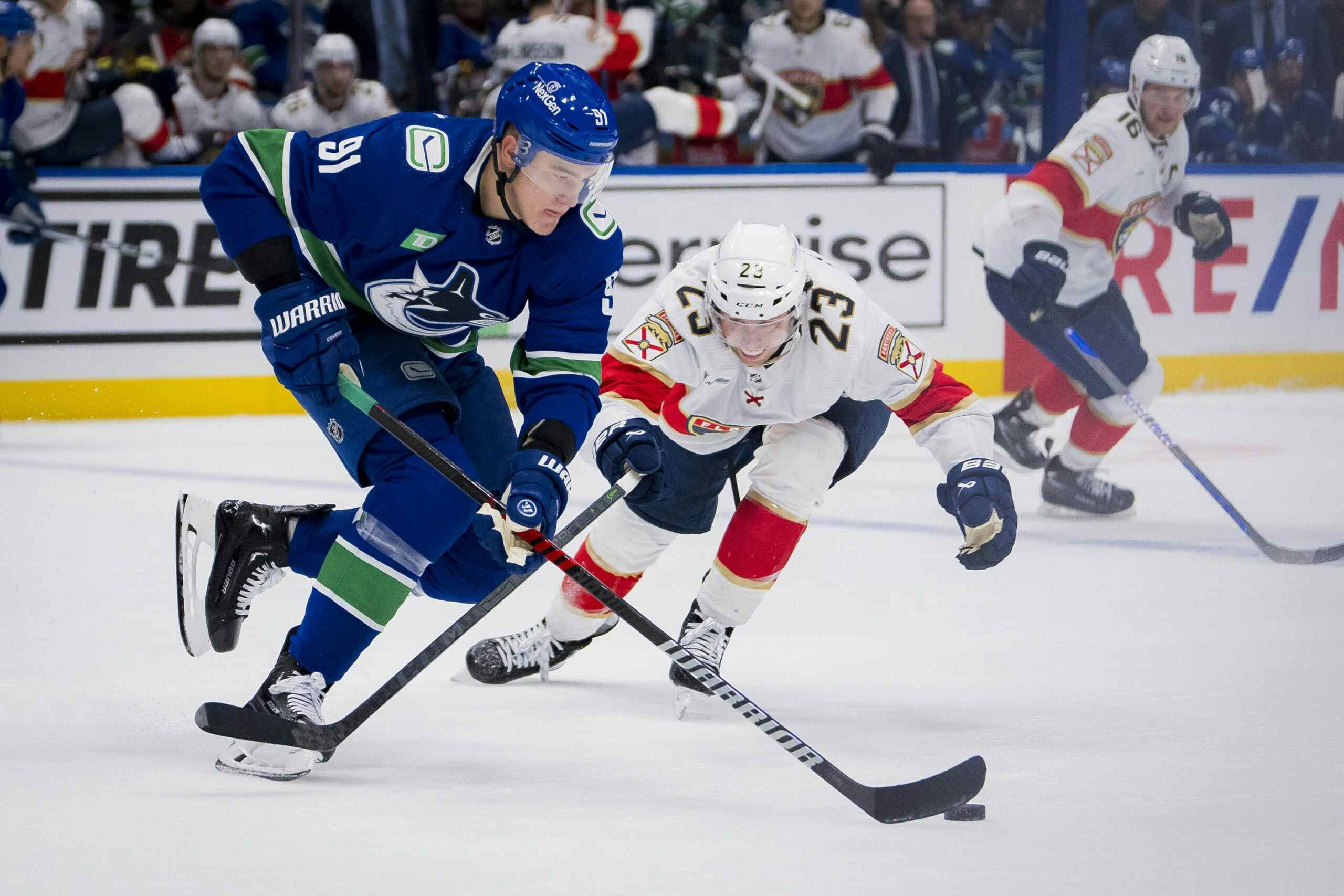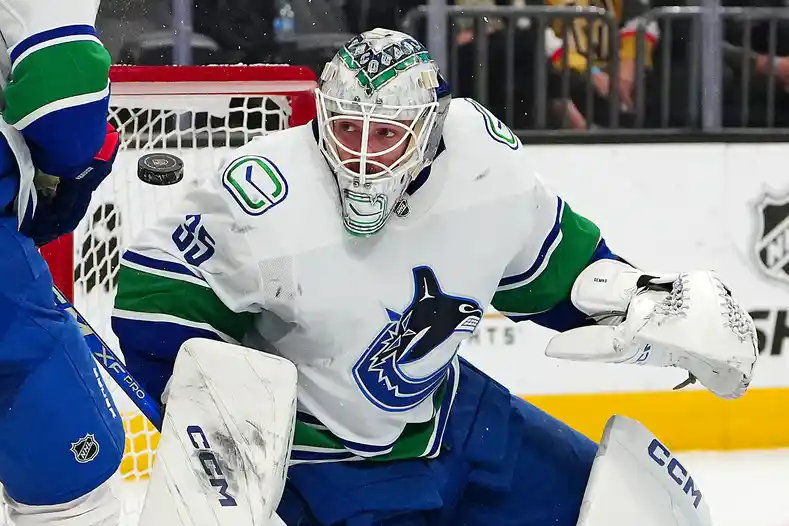Mailbag Part 2: Bowen Byram, Trading Down, and the Demise of the Lightning

5 years ago
It depends on what you mean by “the right path”. I think Elias Pettersson, Quinn Hughes, Brock Boeser, and Bo Horvat are a good starting point to build around; but agree that they really don’t have much else. If they want to be serious contenders, they’re probably going to have to see at least 50% of the remaining roster turn over before that happens.
I agree that they aren’t one or two players away, but as long as they don’t trade any of the core four pieces and don’t do anything monumentally stupid with their cap space, I think they can turn things around within the next 2-3 years. As you probably know, I’m not convinced the people currently in charge have it in them to do that, but at least the team is at the point now where they can talk about building a contender around pieces that are already on the team rather than hypothetical future first round picks and tertiary AHL pieces.
Dahlin
Heiskenen
Makar
Hughes
Byram
Sergachev
McAvoy
Dobson
Brannstrom
Juolevi
I should add a disclaimer here: I don’t feel particularly confident about the middle chunk of this this list, and could see a lot of movement among Heiskenen/Makar/Hughes/Byram/Sergachev/McAvoy in the next couple of years. Overall, I think Byram slots in very nicely within the top tier of defenders taken in the last few drafts. 2019 is a weaker year for defensemen overall, but Byram likely would have gone in the top ten in any of the past three drafts.
I honestly have no idea. When I hear the names that are out there in the media in terms of guys the Canucks have contacted or are rumoured to have interest in, it feels like they’re basically just throwing darts at a list of big names. I can’t seem to gleam any particular traits Francesco Aquilini is looking for in a President other than “guy you’ve heard of”. I think the Ken Holland rumour has legs and he seems like the most likely candidate at the moment, but until the playoffs are over and we have an idea of the full scope of executives that will be available, I don’t feel confident making a shortlist.
I can see the case for trading down if the value is there. The Canucks really need defensemen, but can’t really justify taking one where they sit right now. If they can drop down a few spots and pocket an early second and/or another pick or prospect and still take their pick of the remaining defenders on the board I wouldn’t be against it.
You have to shake up the defense this year in some way or another. You probably aren’t going to fix things overnight, but you need to give some new guys a chance to come in and show what they’ve got. The Canucks seem hell-bent on re-signing Edler and depending on what terms they agree on, that may be the advisable route to go down. I would look to move on from Chris Tanev at some point this season while he hopefully still has some value because the Canucks just can’t count on him to stay healthy. I’d also look to move on from Ben Hutton, who I think has been the target of both undeserved scorn and praise over his time with the Canucks, and is due for a big raise. I’d be looking to give Olli Juolevi every opportunity to make the club this year, and I’d look at the trade market to see what’s out there. Jason Botchford has been really beating the Collin Miller drum, and I’m not sure I’m quite as convinced there’s something there as he is, but that’s exactly the type of move they should be looking at. As much as I know it will be tempting, I would mostly avoid going after the big names in free agency this year. None of those guys are long-term fixes for Vancouver.
I know this was asked mostly in jest but I don’t think I’ve even finished 7 games to completion. The only video games I’ve played multiple run-throughs of are Super Mario 64 and Shadow of the Collossus. I respect that the medium has the storytelling potential that non-interactive formats can’t dream of, but the amount of time one has to invest to reap the rewards just makes most games a complete non-starter for me.
I also think overexposure at an impressionable age kills your ambition and ability to empathize with other people, and turns you into a reactionary; but that’s not why I don’t game. It’s mostly just that I don’t have the time or money for another hobby.
Not a chance. Jim Benning has expressed support for the Comets’ coaching staff and has traditionally been pretty loyal to his staff (and even to a lot of players). Cull is going to get another year. I would be surprised if he sticks around to start the 2020-2021 season if the Comets have another year like this one, though.
It feels a little early to get into this when Elias Pettersson has only played one full season and Quinn Hughes has played just five games. I think Boeser is probably going to get a long-term deal in the $7-8 million range and that’s fine. Pettersson will probably be looking at a $10+ million dollar deal if he can improve on this stellar rookie. Looking further ahead would be little more than speculation. My general philosophy is to pay your stars because you can always afford it. Don’t overspend on luxury, name-brand versions of players you can find for cheap in free agency every year.
I’ll say a first overall pick because the Canucks are currently a lot closer to finishing with a lottery pick than they are to making any real headway in the playoffs. Ask me again in two years and the answer might be different.
Trevor Zegras and Philip Broberg are the guys that scare me the most at the moment. They’re good prospects and they almost certainly have an NHL future, but based on the level of hype I could see both being pretty big disappointments if they go in the top 5-10. They both have speed to burn, and Broberg is already a monster at 6’3″ and 200 pounds, but they each lack the elite-level vision and hockey sense to match their tools.
To be honest, though, I don’t think there’s a big “mistake” guy in this year’s top 10. The days of Lawson Crouse types getting serious top-10 buzz are mostly over.
I know I said in an answer to a previous question that I would be in favour of trading down, but I also think you can take logic of “draft picks are basically lottery tickets, so your best bit is just to collect as many as possible” too far. Without getting too bogged down in specifics, I think some people who don’t really pay that much attention to the draft are under the impression that after midway through the first round, scouting departments are basically just pulling names out of a hat. Even I’m not cynical enough to believe that. There’s obviously a general drop-off in talent after the top 5 or so, then again around 15-20, and again midway through the second round; but identifying where those drop-offs are precisely is going to vary from draft to draft. For example, the 2015 and 2016 drafts were quite deep, and still had first round-calibre talent available into the mid-to-late second round. Barring any unforeseen developments, the Canucks will have the ninth pick of the second round this year. In some years, that will land you in a position to take someone like Alex DeBrincat, who had first-round talent but fell due to antiquated notions about size. In other years, where the talent pool is shallower and player quality drops off sooner, it lands you firmly in crapshoot territory. The key is having a scouting department that can identify where the talent drops off, and having an executive group that can pull the trigger in a timely fashion as selections are being made.
The conversation about draft pick value that’s been happening over the past couple years has been an illuminating one, and I think there are a couple of key takeaways:
- We should stop thinking of draft picks in terms of round and start thinking about them in terms of their overall configuration within the draft (10th overall, 40th overall, 71st overall, as opposed to first round, second round, and third round).
- Talent drops off significantly relatively early in the draft, to the point that by the third round in most years we can safely say that difference between the players that are available is basically negligible.
The problem with this logic, though, is that it assumes every draft is static in terms of player quality and that scouting has basically reached it’s final form and that teams aren’t going to ever improve at it. Neither of these things is true. I’m definitely in favour of trading down when it makes sense and agree that after a certain point it’s a good way to extract extra value, but I don’t think we’ve cracked to code yet by any means and I think it’s absolutely imperative that your scouting department pinpoints where the talent begins to drop off.
Okay, now that I’ve gotten all that out of the way, I can finally answer your question. I’m in favour of the Canucks trading down under the right circumstances, but it’s very difficult to divine what those circumstances will be until moments before the picks are made. I don’t know enough about the 30-60 range of this year’s draft to be confident yet about whether or not it’s worth it for the Canucks to hold on to their second rounder or whether they’d be better off trading down. Obviously, as always, it depends on what offers are out there.
Every time a super-team like the Lightning fails to meet expectations in the playoffs it seems to have a regressive influence on the game as a whole. Overall, I think teams that have tended towards smaller, more skilled forwards over big bruisers with less puck skills have had the better results; but there’s probably a reasonable debate to be had about when and if that strategy begins to hit a point of diminishing returns. I think it’s also important to note that even the teams that have more of a reputation for being bigger and badder in today’s NHL still have a ton of skill, and guys throughout their lineup who can score. I don’t think it has to be an all-or-nothing approach. It’s not like the Blue Jackets are the modern era’s answer to the Broad Street Bullies. They have a ton of skill throughout their roster, with nine players who scored over 30 points in a CBJ uniform this year. Their second-leading scorer is 5’8″ Cam Atkinson, and Artemi Panarin and Matt Duchene are each under six feet, too. Overall, they’re exactly the kind of team I would like to see have success, because they’ve been built well from top to bottom. They just had a down year, and as a result, expectations were lowered. I’m glad they’re having success and I don’t think it should dissuade organizations from prizing skill and brains over brawn. I’m just surprised it’s coming at the Lightning’s expense, much like everyone else is.





